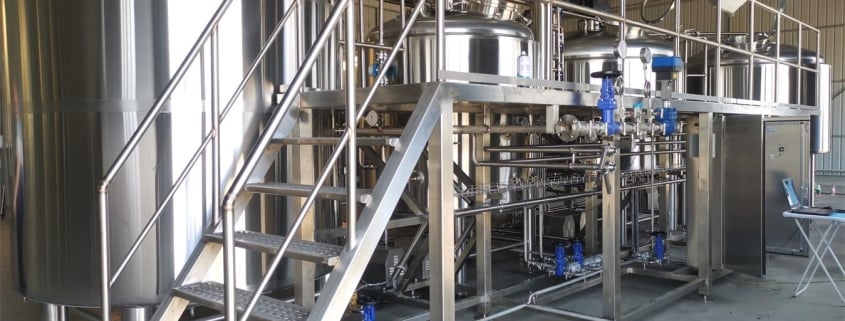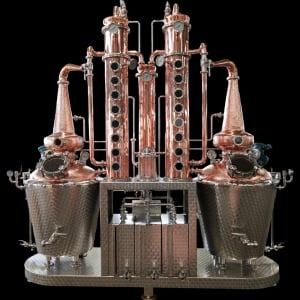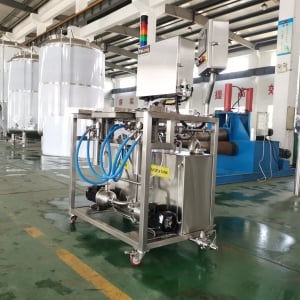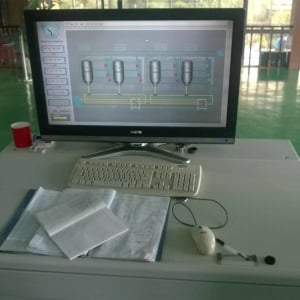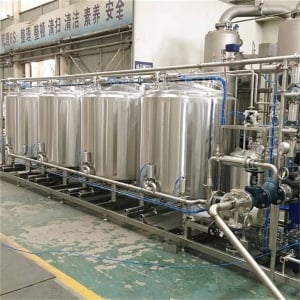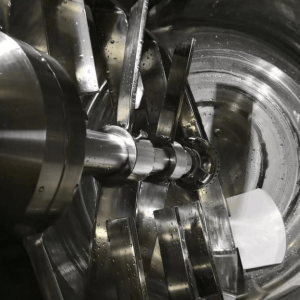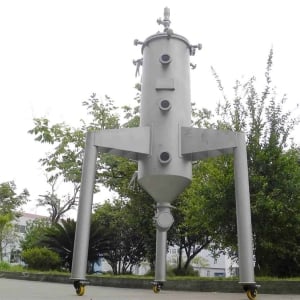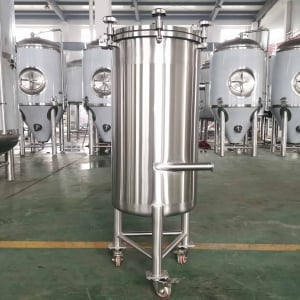Craft Beer Equipment
craft beer equipment has exploded in popularity over the past decade. As more people discover the wide range of flavors and styles that small, independent breweries offer, interest continues to grow. For those looking to start their own craft brewery or upgrade equipment, having the right tools and systems in place is critical for producing distinct, quality beer.
This guide covers key considerations when outfitting a brewhouse with the essential craft beer equipment. We’ll explore typical setups and component options from an overview level down to specific recommendations. Whether you’re going all-grain or extract-based, aiming for a few barrels or ramping up volume, proper equipment selection, sizing, and configuration pave the way for efficient operations and great beer.
Craft Beer Equipment Overview
The core craft brewing process starts with milling malt, mashing to extract sugars, boiling the wort, fermenting, and packaging. The main components involved include:
Brewing System
- Mills
- Mash tuns
- Lauter tuns
- Brew kettles
- Wort chillers
Fermentation and Aging
- Fermenters
- Brite tanks
Packaging Line
- Keg fillers
- Can fillers
- Labelers
- Bottle fillers/cappers
Ancillary Equipment
- Pumps
- Piping
- Valves and fittings
- Control panels
- CO2 systems
Infrastructure
- Boilers
- Chillers
- Water treatment
- Grain handling
- Cleaning and sanitation
Proper sizing, configuration, and smart equipment choices lay the foundation for an efficient, scalable small batch or production brewery.
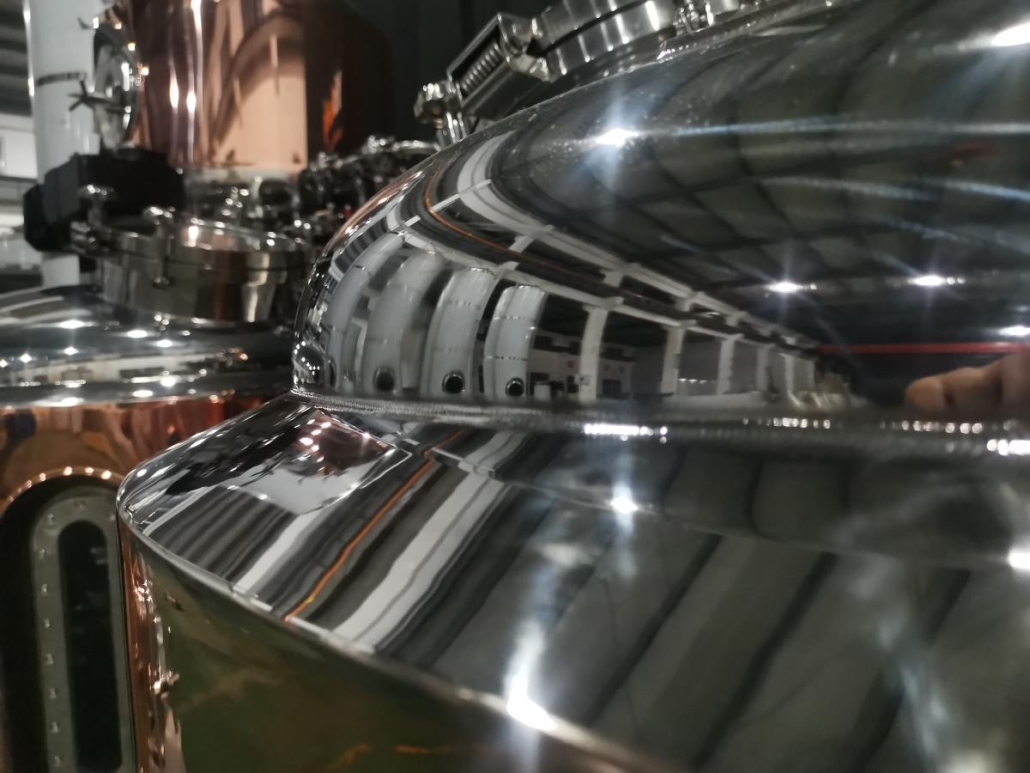
Key craft beer equipment Types
Below outlines common equipment in a craft beer brewhouse and their purpose:
| Equipment | Description |
|---|---|
| Malt mill | Crack malt kernel to access starch for mashing |
| Mash tun | Mix/steep milled grain with hot water for sugar extraction |
| Lauter tun | Separate sweet wort from spent grains |
| Brew kettle | Boil wort with hops for aroma and bitterness |
| Whirlpool | Spin wort to separate trub and hops |
| Heat exchanger | Quickly cool boiling wort after the kettle |
| Fermenter | Ferment sugar into alcohol |
| Brite tank | Clarify, carbonate, store beer |
| Filler | Fill kegs, cans, bottles with beer |
| Lab equipment | Measure gravity, pH, cell counts and quality |
The Brewing Process In-Depth
Now that we’ve covered the major equipment categories, let’s walk through the end-to-end brewing process with parameters and options for each step. Having a high level view of the operations flow will help guide infrastructure and equipment decisions.
Milling
Milling cracks malt kernels so hot water can access the starch needed to convert to sugar. The degree of crushing impacts mash efficiency. Too fine can create a stuck sparge while too coarse lowers extract yield. Roller and hammer mills are common options with variability in roll spacing and screens.
Mashing
Mashing converts malt starches to fermentable sugars via enzyme activity. The mash tun mixes grains with hot liquor at temperatures ideal for enzyme function. Infusion mashing adds a single liquor volume while multi-step infusions boost enzyme activity through temperature adjustments. Batch, fly, and continuous sparge tun configurations impact tun sizing.
Lautering
Lautering uses the grain bed as a filter to separate sweet wort from spent grains. Sparging rinses sugar from the grains. Tun design, rake arms, and flow rates impact efficiency. Automated systems allow tighter process control.
The Boil
The boil sterilizes the wort, extracts hop flavors, precipitates proteins, and condenses the liquid. Adding hops at different times imparts bitterness, flavor, and aroma. Boil kettle size limits batch size. Direct fire or steam jackets heat the wort. Vigorous rolling boils drive off volatiles.
Whirlpooling
Whirlpools use a spinning action to separate hop debris and coagulated proteins from the wort. This clarifies the liquid prior to chilling and fermentation. Whirlpools may be integrated in the kettle or as a separate tank.
Wort Cooling
Chilling quickly stops the boil and brings the wort to yeast pitching temperatures. Heat exchangers with cold glycol, water, or refrigerant rapidly extract heat. A plate and frame setup is common among small breweries.
Aeration & Pitching
Introducing oxygen into cooled wort allows yeast to synthesize lipids needed for healthy fermentation. Oxygen can be added inline through diffusers or via aeration stones in the fermenter. Dry yeast or liquid slurries are then pitched.
Fermentation
Yeast convert sugars into CO2, alcohol, and flavor compounds during fermentation. Multiple fermenter options exist from open oak to stainless steel to plastic. Temperature control regulates yeast activity and final flavor profiles.
Maturation & Conditioning
Post-primary fermentation, beer ages in conditioning tanks to smooth flavors, increase clarity, and sequester carbonation. Bright tanks for clarifying and serving tanks for carbonating and storing overlap in function.
Packaging
Beer moves from bright tanks to kegs, cans, or bottles on manually operated or automated lines. Filler setups vary from gravity flow to counterpressure for different container types. Labelers, cappers, and can seamers integrate into the line.
Lab Tests
Brewers monitor specific gravity, alcohol, pH, bitterness, color, yeast health, clarity, and microbial contamination throughout the process. Lab equipment improves quality control and repeatability.
Key Brewery Equipment Design Considerations
Properly outfitting a brewery requires dialing in equipment specifications across operational parameters:
| Equipment Criteria | Design Factors |
|---|---|
| Sizing | Batch size, fermentation capacity, peaks |
| Layout | Flow, spacing, room for expansion |
| Power, utilities | Electric, water, drains, steam |
| Controls | Level of automation wanted |
| Cleaning | CIP sprayballs, ports, channels |
| Material | Stainless, alloy composition |
| Installation | Flooring, clearance, seismic |
| Flexibility | Interchangeable parts standard sizes |
| Data monitoring | Remote access, data historian |
| Aftermarket support | Available parts, troubleshooting help |
| Compliance | Welds, pressure rating |
Consider both immediate production goals and longer term business objectives when making equipment decisions. While modular breweries scale well, reconfiguring floor space for substantially larger tanks limits studiosity. Factor in peak volumes, turnover rates, storage, and possible packaging formats.
Choosing Brewing System Suppliers
An abundance of equipment manufacturers and suppliers exist in the craft beer industry. Offerings range from turnkey breweries to a la carte component sourcing. Use the following criteria when evaluating providers:
| Supplier Considerations | Evaluation Factors |
|---|---|
| Company profile | Years in business, reputation, customer base |
| Offerings | Equipment brands, packages, modular/custom options |
| Experience | Types of systems designed, markets served |
| Design services | Quotes, layouts, 3D configurations, specs |
| Pricing | Equipment costs, shipping expenses |
| Lead times | Production schedule, order to delivery |
| Installation help | Startup guidance, contractor references |
| Support | Warranties, manual documentation, training |
| Partnerships | Complementary equipment brands, integrations |
| Project management | Communication protocols, account reps |
Both domestic and overseas manufacturers deliver quality brewing equipment. Shipping costs and lead times vary. Leaning on an equipment rep through quote, purchase, and startup stages provides helpful guidance for those newer to evaluating and purchasing production machinery.
Pricing Overview for Key Components
Equipment costs make up a sizable portion of a brewery’s capital expenditures. Expect pricing to correlate somewhat with capacity, level of automation, material grade, and quality. Below provides typical price ranges for core brewing hardware at common craft brewery scales:
| Equipment | Nano Price Range | Micro Price Range |
|---|---|---|
| 3 roller malt mill | $2,000 – $4,500 | $4,000 – $7,000 |
| 5-10 barrel mash tun | $6,000 – $12,000 | $10,000 – $18,000 |
| 3-5 barrel fermenters | $1,500 – $4,000 | $3,000 – $6,000 |
| 1-3 bbl brite tanks | $2,000 – $5,000 | $4,000 – $8,000 |
| 3-5 bbl brew kettle | $6,000 – $14,000 |
Installation & Operation
Proper installation and operation of brewing hardware improves performance, efficiency, and longevity. Below are key considerations across equipment when starting up a system:
| Equipment | Installation Tips | Operation Best Practices |
|---|---|---|
| Malt mill | Secure mount, test spins before use | Keep rollers properly gapped |
| Mash tun | Level install, slope for drainage | Rinse thoroughly between uses |
| Brew kettle | Reinforced floor anchors | Clean after each boil cycle |
| Fermenters | Room for airlock, blowoff tube | Monitor temp, gravity daily |
| Piping | Slope for drainage, support spans | Flush after transfers, clean CIP |
| Electrical panels | Clean, climate controlled location | Check sensor accuracy |
Following manufacturer operating procedures for assembly, cleaning, maintenance keeps equipment in top shape. Validate pressure settings, electrical load limits, flow rates. Monitor seals for leaks at connections. Establishing checklists for start-up, standard batch production, shut-down, cleaning provides consistency.
Preventative Maintenance & Safety
A routine maintenance program identifies wear, needed repairs, and potential vulnerabilities before operational impacts or safety issues arise. This prevents unplanned downtime and ensures consistent beer quality.
| Maintenance Activity | Frequency | Item Check |
|---|---|---|
| Sensor calibration | Monthly | Gauges, switches, transmitters |
| Fastener inspection | Monthly | Loose nuts/bolts, leaks |
| Belt tension | Quarterly | Pulley alignment, wear |
| Seal replacement | Annually | Worn gaskets, o-rings |
| Valve rebuild kits | Annually | Sticking valves, leaks |
| Pressure relief certification | Annually | Properly configured release valves |
Keep detailed logs of issues. Schedule annually inspections around cleaning cycles. Stock common spare parts like seals, gaskets, fittings. Replace fluid hoses showing cracks or wear.
Safety sweeps identifying trip hazards, pinch points, slippery surfaces help prevent workplace injuries. Verify electrical lock out procedures when accessing enclosed tanks and equipment. Provide team safety training relevant equipment dangers like rotating parts, hot liquid, pressurized flows. Post emergency shut-off protocols clearly.
Adhering to a prudent maintenance and safety plan keeps small batch producers humming along. Reach out to equipment experts for guidance instituting protocols.
Tips for Choosing an Equipment Layout
Optimizing brewhouse design comes down to understanding ingredient and product flow, sizing equipment, and configuring functional stations. The equipment layout impacts operating efficiency so warrants upfront planning when constructing a brewery.
Consider both current and future throughput needs when laying out equipment and allocation space. Favor equipment that enables automation for repetitive tasks like cleaning as volumes increase. Seek to minimize liquid transfer distances which reduces loss to line friction. Stage similar functioning units together in “centers”. For example, group fermentation cellar tanks separately from brite packaging tanks.
Where possible, leverage gravity transfer between processes rather than pumps. Place mash tuns higher than kettles, which sit higher than fermenters when possible. This enables natural liquid flow downward, saving pumping costs. Allocate sufficient space around vessels for properly cleaning and accessing parts like manways.
Many equipment vendors offer free brewery design services mapping out equipment configurations which greatly aids planning. They understand adjacency requirements, delivery routes, installation nuances. Take advantage by providing the engaging vendors with intended production volumes, beer types, packaging formats. Layout sketches help tailor equipment proposals and reduce unforeseen infrastructure hurdles.
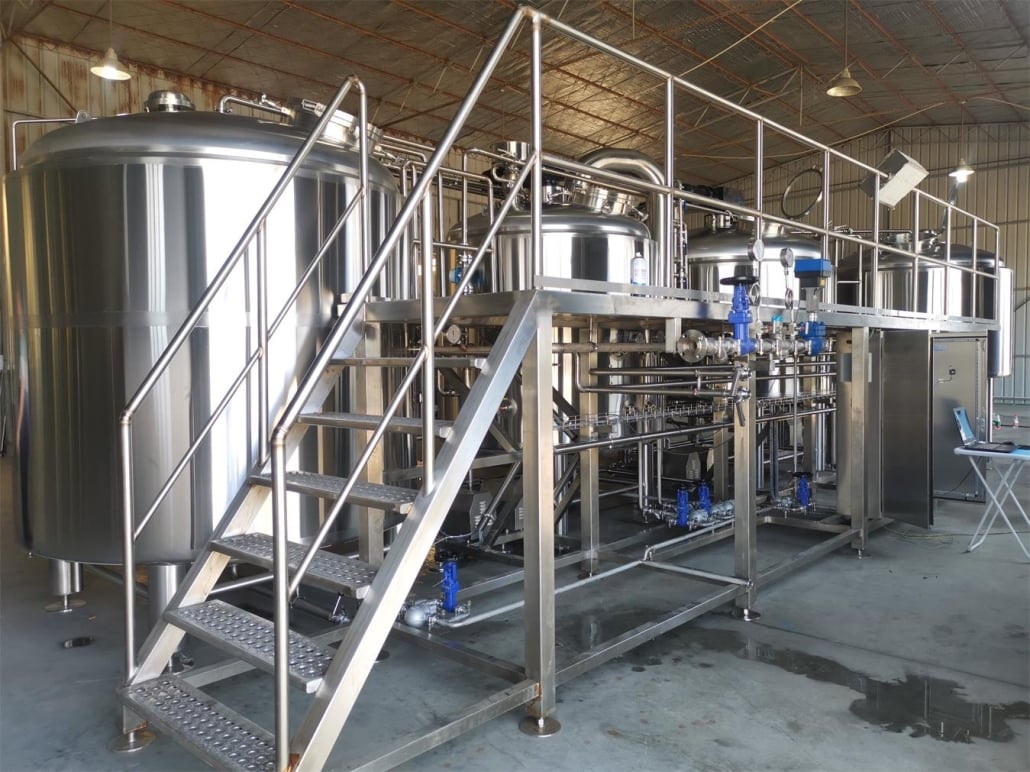
Key Takeaways – Selecting craft beer equipment
Taking time to map out operational volumes and growth plans makes fitting out a brewhouse much smoother. Finding an experienced equipment vendor to collaborate with on equipment sizing, configurations, and budgeting gives brewers confidence in their investments. Leveraging guides like this arms craft producers with knowledge to ask the right questions.
Carefully weigh options on sizing, features, automation, and expandability when selecting equipment. Seek out references from producers operating comparable systems. Validate modular components integrate smoothly across suppliers. Meet lead times by ordering equipment 6-12 months out. Building in 30% extra capacity helps future growth. Positioning tuns/tanks smartly improves ergonomics and doubles as effective marketing when hosting tours.
FAQ
Q: What are the most critical equipment decisions for starting a brewery?
A: For first time brewery owners, the top equipment considerations include:
- Knowing capacity requirements across fermentation, storage, and packaging
- Determining brewing system and vessel layout based on level of automation and process flow
- Choosing equipment fabrication grade, pressure rating, and finish level
- Selecting controls – manual valves or automated actuators and sensors
- Appointing an equipment rep as expert guide during planning and startup
Q: What should brewers upgrade first as production scales up?
A: As breweries grow, the process steps to proactively upgrade include:
- Shifting from single infusion mashing to step-infusion or automated decoction mashing
- Adding more precise sensors and automation – fluid handling, temperatures
- Installing CIP sprayballs to make cleaning less labor intensive
- Investing in more consistent grain milling, like a 3-roller mill
- Upgrading fermentation temperature control systems
Q: What comes first – picking a location or ordering equipment?
A: Finalizing a physical brewery space with appropriate availability of utilities, construction specs, loading access, and capacity for expansion should generally occur prior to committing to equipment vendors and packages. This allows equipment selection to match the site limitations and avoids costly rework down the line.

